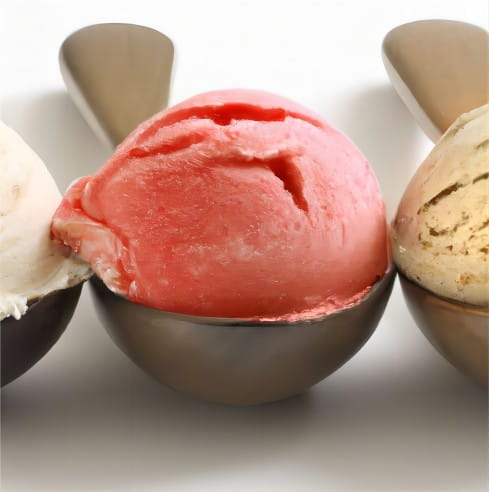Glyceryl Monostearate Buying Guide-FAQs about buying GMS

Ever wonder what makes your favorite lotions, creams, or foods feel so amazingly smooth and lush? What gives them that perfect, long-lasting texture? Surprise – the secret is an ingredient called glyceryl monostearate!
But what the heck is glyceryl monostearate anyway? Is it some weird chemical or could it help make your own DIY products next-level? This guide will break it all down for you.
We are going to see what makes glyceryl monostearate so special and how people use it. And we’ll help you figure out which type and amount is right for your creations. Get ready to unlock some serious texture magic! By the end, you’ll be a certified glyceryl monostearate expert!
What is glycerol monostearate?
Glycerol monostearate, also called glyceryl monostearate or GMS, is an emulsifying agent made of glycerin bound to stearic acid. It helps stabilize emulsions.
Its ability to connect oils and water comes from having a hydrophilic glycerol head and hydrophobic stearic tail. This makes GMS useful for preventing separation in many products like baked goods, ice cream, gum, and more.
Chemically, GMS is synthesized by attaching glycerin to stearic acid. The resulting monoester provides emulsifying and thickness-enhancing effects that let ingredients combine that typically don’t mix.
With approval for use in foods and cosmetics, GMS serves as a common additive to improve texture, consistency, and stability across several manufacturing uses.
Glycerol monostearate side effects
Glycerol monostearate GMS is generally considered safe for eating and using topically in limited amounts. It’s commonly used as a food additive, pharmaceutical ingredient, and cosmetic ingredient.
However, some individuals may experience side effects or sensitization. Here are a few potential side effects reported:
Gastrointestinal Effects: Consuming foods or products with GMS may cause mild gastrointestinal issues. These effects vary from person to person.
Skin Irritation: When used on skin, GMS can sometimes irritate and cause redness, itching, or a rash in some people. It’s recommended to stop use and see a doctor if any negative skin reactions occur.
Glycerol monostearate dosage Reddit
There’s no recommended dosage for taking glycerol monostearate additive on its own. That’s because GMS is primarily used as an additive in foods, cosmetics and pharmaceuticals.
- GMS works as an emulsifier and stabilizing agent, not a nutrient or nootropic with stand-alone effects. There’s no proof that mega-doses would be beneficial.
- One Reddit user theorized that very high amounts might have laxative effects from its surfactant properties. But there’s zero data around this.
How to dissolve glycerol monostearate in water?
Glycerol monostearate has very limited water solubility due to its structure. It contains both polar glycerol and nonpolar stearic acid groups. To dissolve GMS in water, using an emulsifier and heating is typically required.
One method is first dispersing the GMS powder into hot water above 70°C while vigorously stirring to break up the particles. Then add an emulsifier like polysorbate 80 which allows the GMS to form micelles with the hydrophobic tails turned inward. This keeps the monostearate evenly suspended in the solution.
However, once cooled the solution may start to separate over time. The mixture needs extra ingredients like glycols or gelling agents for better stability to create more robust emulsions. But simple hot water dispersions with polysorbate can dissolve small GMS amounts for immediate use in cosmetics or cooking. Complete water miscibility is difficult due to the oil-loving nature of the stearic part of the molecule.
Keeping Glyceryl Monostearate Safe and Effective
To keep glyceryl monostearate (GMS) in good shape over time, proper storage, careful handling, and safety steps are key.
Store GMS somewhere cool and dry, away from direct light or moisture. Ideal temps are 15-25°C, with humidity under 60% so it doesn’t get lumpy or break down. When working with GMS, wear protective gear like gloves and dust masks to limit contact, using good hygiene practices. While generally safe in food and cosmetics, GMS can still irritate skin or trigger allergies for some. Rinse with water if eye or skin contact, call a doctor if irritation continues.
How long GMS lasts depends on grade and storage – usually 1-2 years. First in, first out stock rotation helps. Watch for any changes like odd smells or color, signs it’s gone off. With the right precautions, GMS stays safe and effective!
Is glycerol monostearate vegan?
Glycerol monostearate (GMS) is typically considered vegan and good for plant-based diets. Even though stearic acid can come from animal fats, most GMS used in food and cosmetics is made from vegetable-sourced stearic acid, often from palm oil, soybean oil, or coconut oil. The glycerol can also come from synthetic or plant-sources.
Unlike other emulsifiers, like egg yolk lecithin, making GMS doesn’t require any animal ingredients or byproducts. Also, GMS is primarily added in small amounts to products rather than being a main ingredient. This means trace contaminants are unlikely.
With the starting ingredients and production process being vegan, and regulations around purity, glycerol monostearate avoids animal-derived stuff. When sourced from plant oils under good manufacturing standards, glycerol monostearate can even be considered both halal and kosher. So, GMS is widely available as a vegan emulsifier.
Is glyceryl monostearate natural or synthetic?
Glycerol monostearate can come from both natural and synthetic sources.
Commercially made glyceryl monostearate is mainly synthetic. It’s made by chemically reacting vegetable-based stearic acid with glycerin under controlled conditions to generate the monoester. The stearic acid often comes from palm oil, while the glycerin can be natural or synthetic.
Synthetic glycerol is cost-effective. The finished glyceryl monostearate has the same chemical structure as the natural version made through enzymatic esterification in plants. However, the natural enzyme process results in a mix of mono-, di- and triglycerides, unlike targeted synthetic production.
While nature does produce small amounts of monoesters like glyceryl monostearate, commercial production achieves higher purity and scale through controlled chemical synthesis. The label “natural” is sometimes used for marketing, but nearly all food-grade glyceryl monostearate is manufactured artificially for consistent functionality, even if its components may be natural.

Is glyceryl monostearate safe to eat?
Glyceryl monostearate (GMS) is generally seen as safe for eating by major regulatory groups.
GMS is approved for use as a food additive in lots of products like baked goods, icings, and candies. Typical usage levels range from 0.2% to 3% of the total food weight.
The expert Food and Agriculture Organization/World Health Organization Committee on Food Additives has not set any limits on how much glyceryl monostearate someone can eat. While occasional allergic reactions or intolerances may happen in sensitive people.
GMS has not shown significant toxicity or cancer-causing effects per studies. Any potentially harmful byproducts would be in tiny amounts not expected to cause health issues at normal exposure levels.
With no good evidence of harm and given its long-standing, widespread presence across the food supply, glyceryl monostearate is considered generally recognized as safe when used properly in manufacturing. Its emulsifying properties improve food quality and stability with negligible risks from eating it, though those with stearate sensitivities should be mindful.
Are there any tips for incorporating GMS successfully into homemade products?
Using glyceryl monostearate (GMS) properly in homemade goods takes some technique for the best outcome. First, pick a GMS type – powder, pellets, flakes – for what you need. To spread it evenly, sprinkle GMS slowly into heated oils around 70-80°C, stirring until fully melted. But don’t overheat, it can discolor GMS or make it less effective.
If adding to an emulsion, get your water portion to a matching temperature before mixing. Use high-speed blending to get a smooth, stable emulsion. For some recipes, a co-emulsifier like cetearyl alcohol helps too.
Start with small amounts, 1-5% of total formula, adjust up if needed. Too much GMS can make things greasy or split. After emulsifying, cool gradually with gentle stirring so GMS doesn’t crystallize. With practice, you’ll master using GMS to upgrade homemade products!
Conclusion
In this guide to GMS, we’ve almost covered everything about glyceryl monostearate – from its special properties and uses to common questions and myths. The goal of this was to provide you with the full knowledge to start using this game-changing ingredient in your products.
Whether you want to stabilize emulsions, improve texture, or boost overall quality, glyceryl monostearate is a handy and powerful tool to have. You can lift your products to a new hype by using GMS of right type, dosage and technique.
For finding glyceryl monostearate and other additives and emulsifiers, Mondstar is the place to look for. This China based company is dealing in food additives and raw chemicals for over 10 years. With their deep expertise in the field. Mondstar is your one-stop-shop for all glyceryl monostearate needs.
